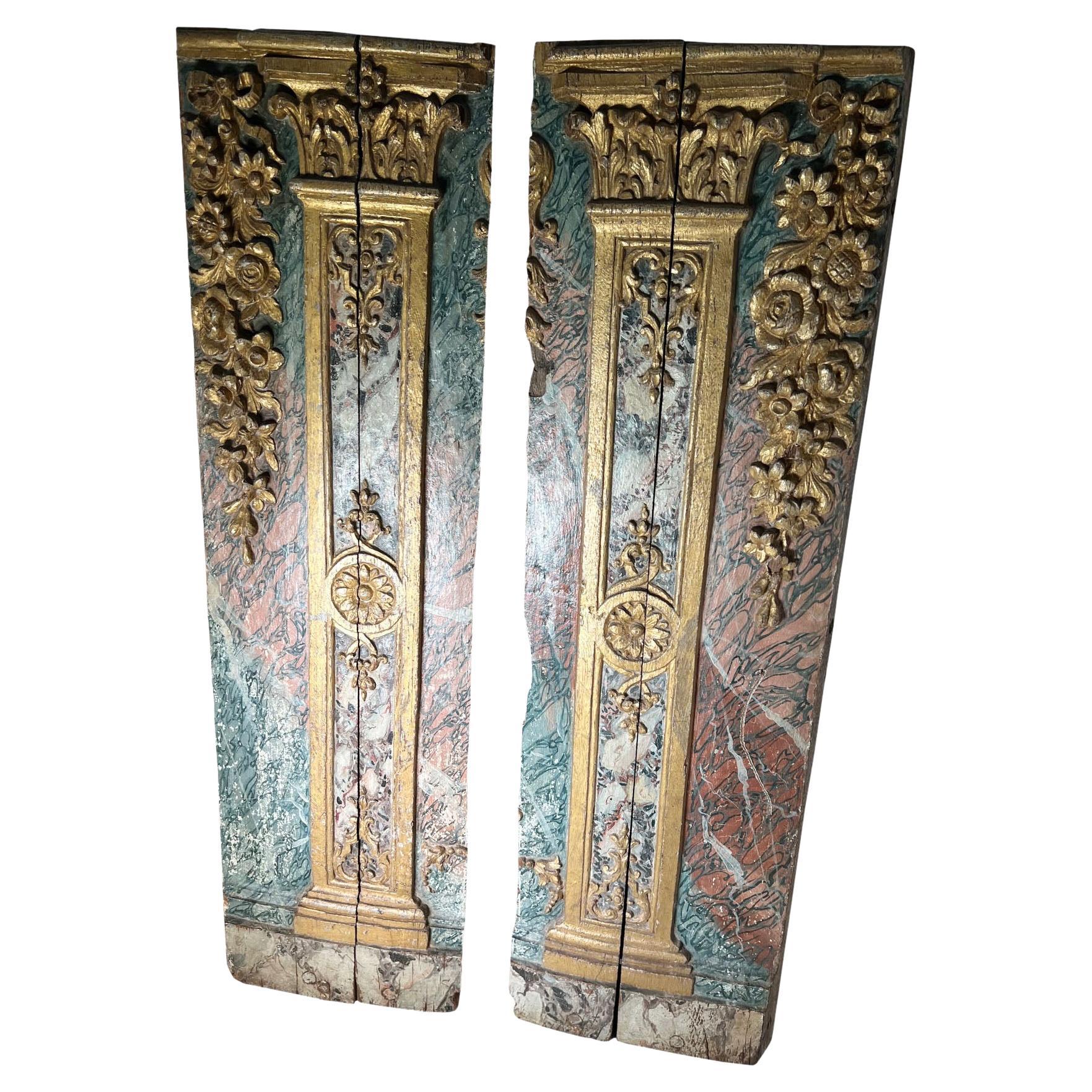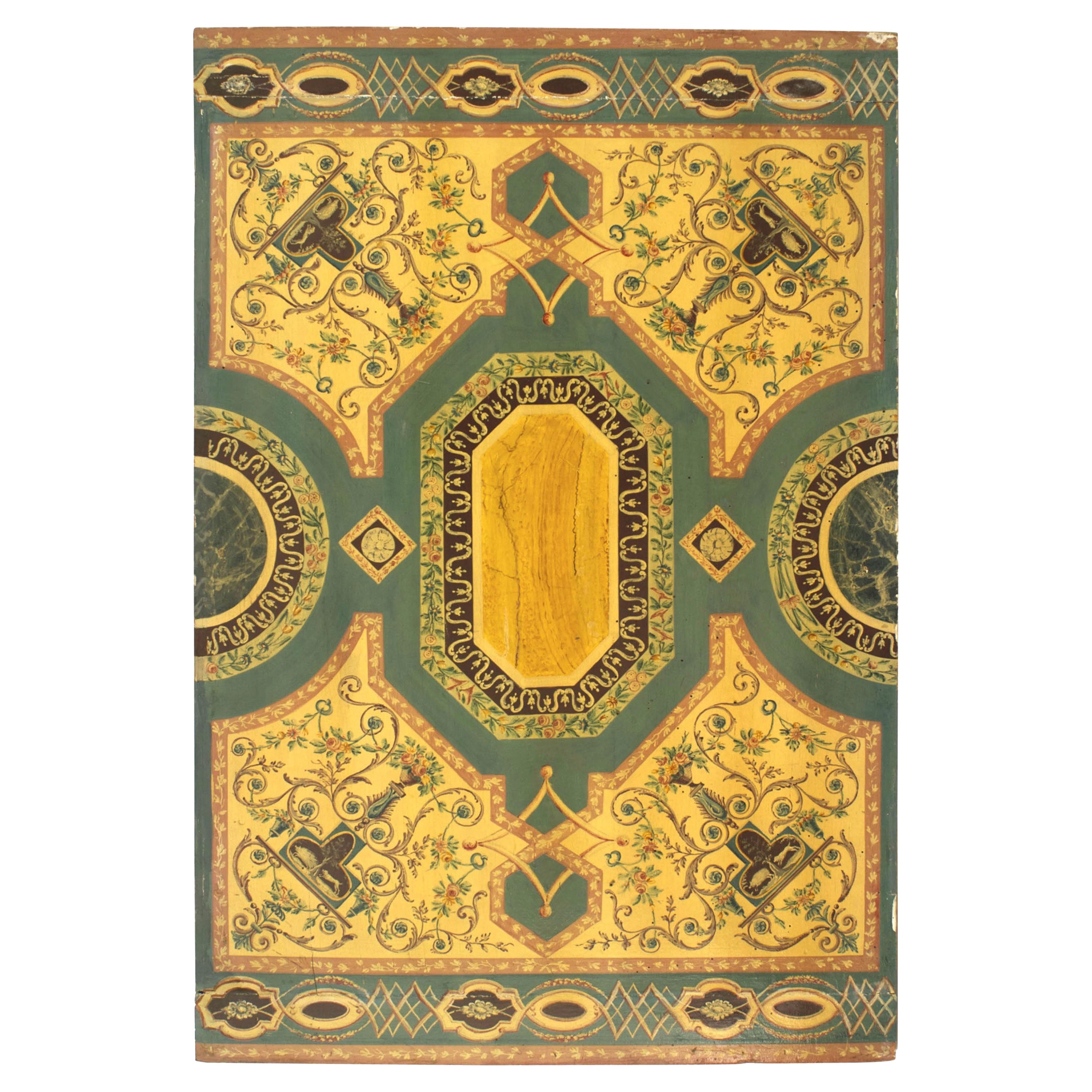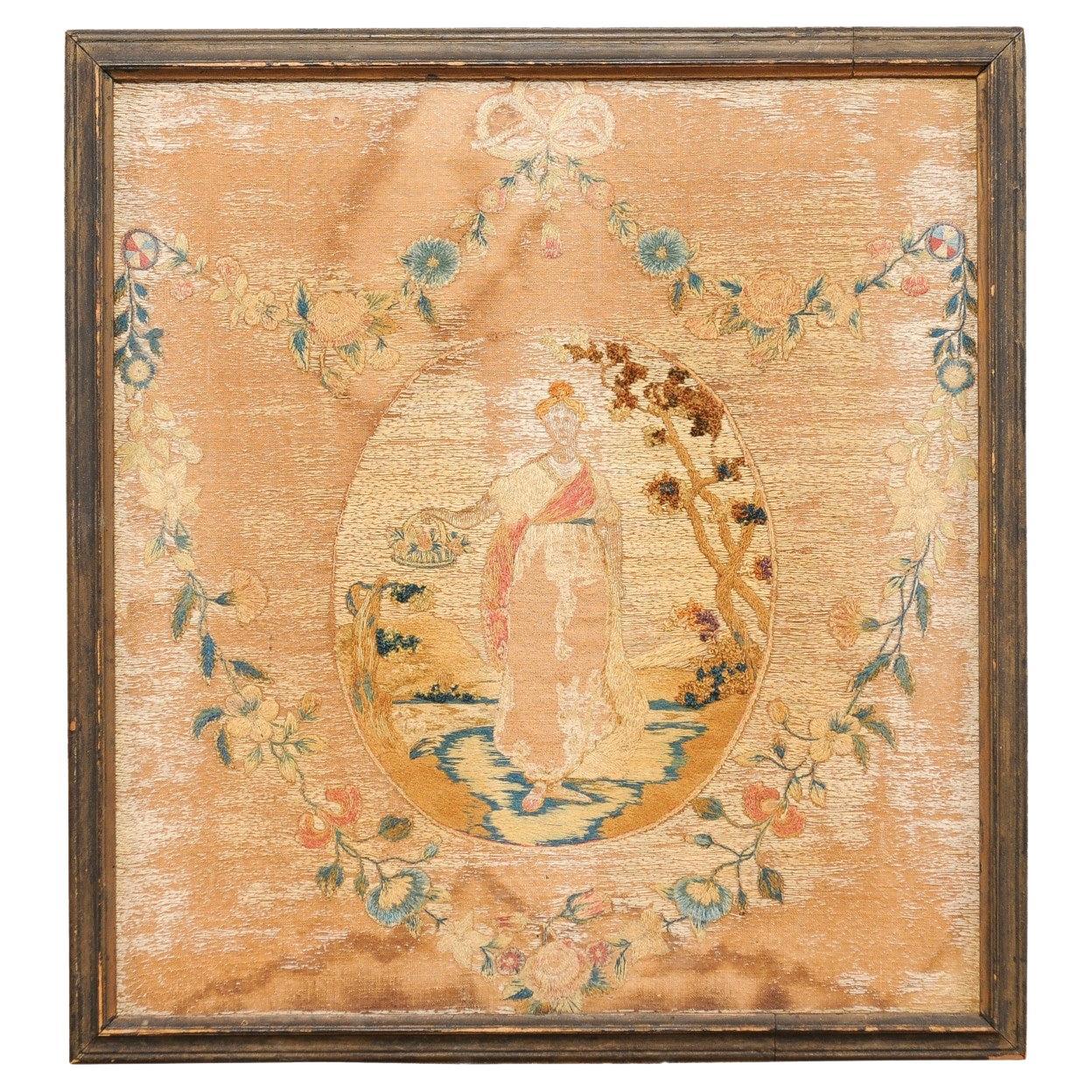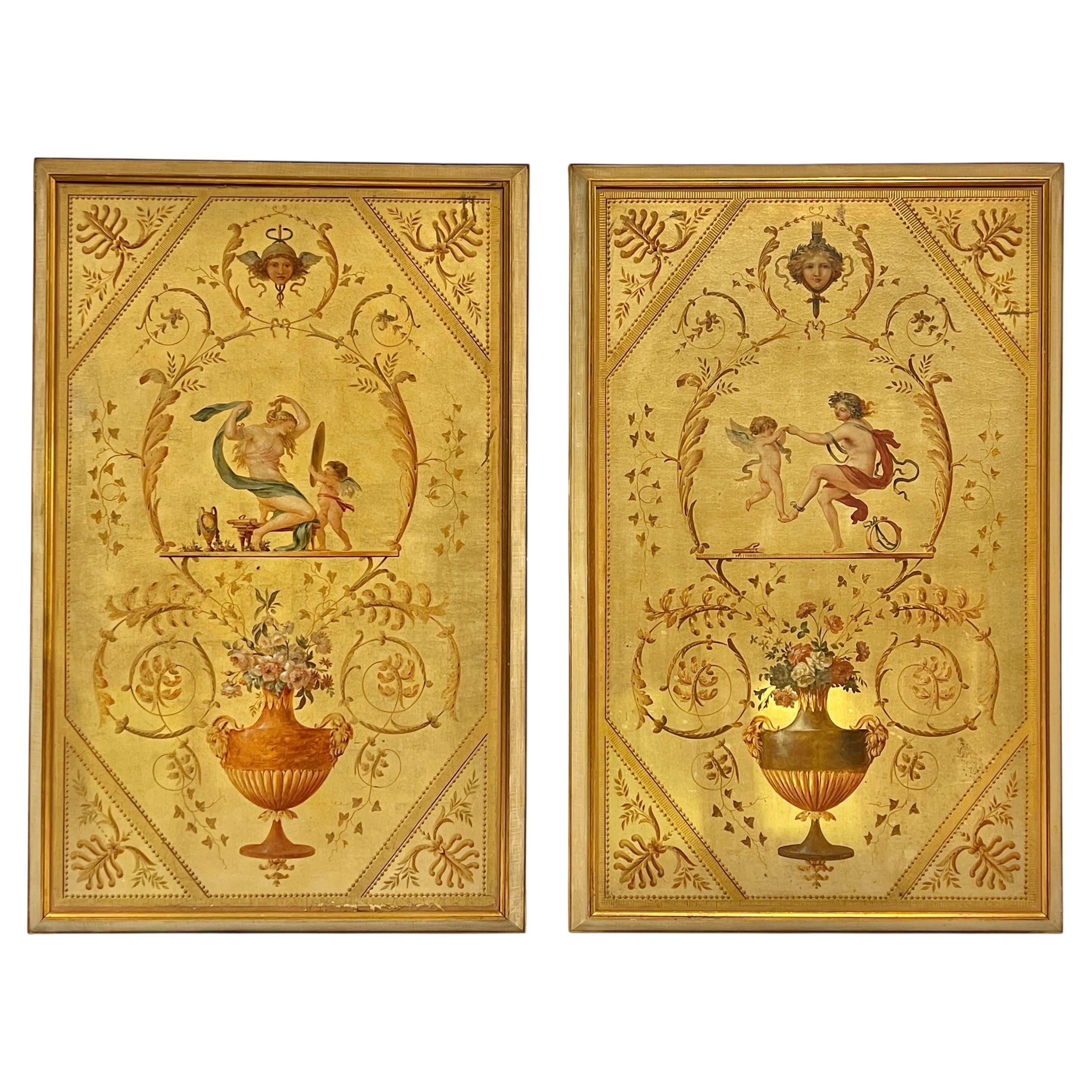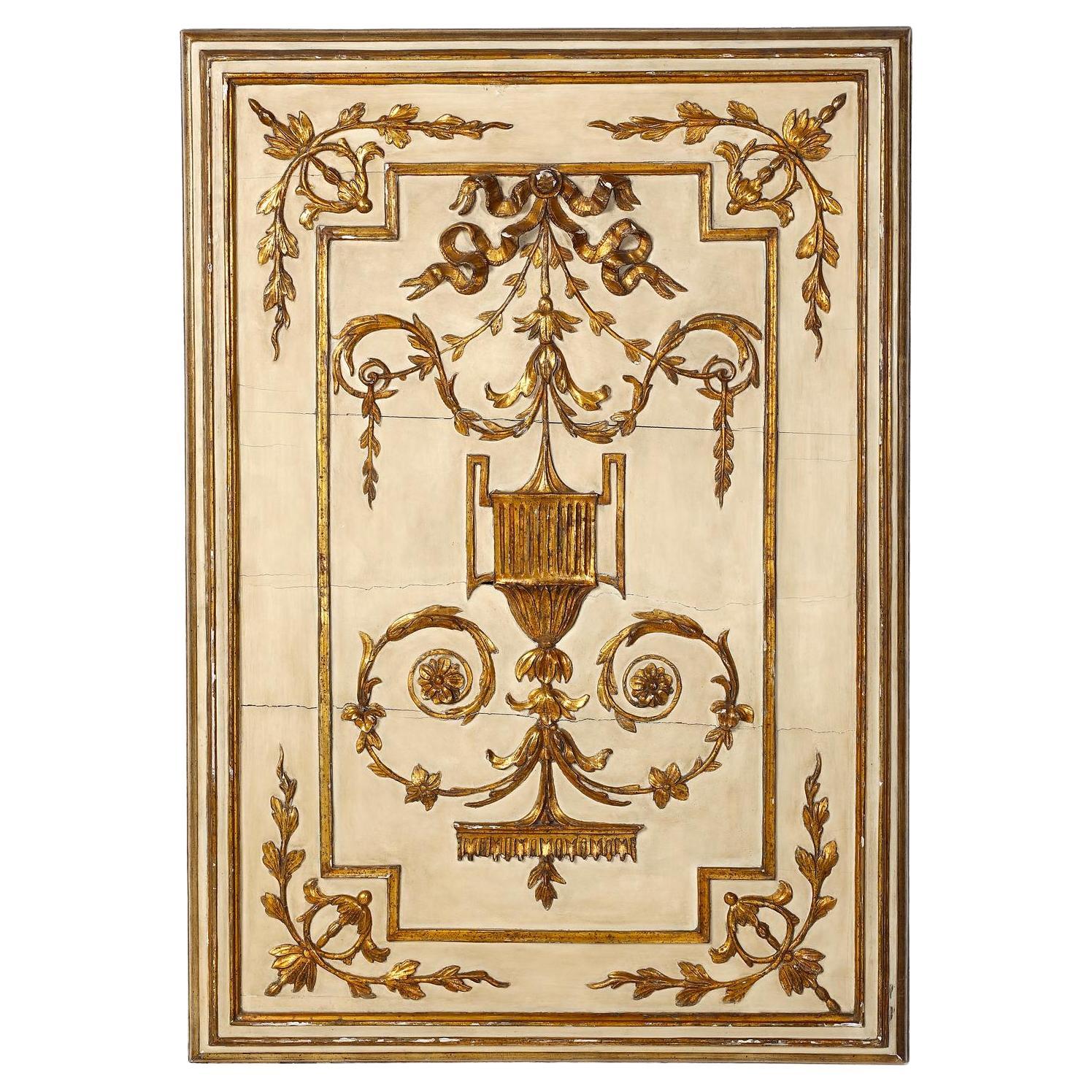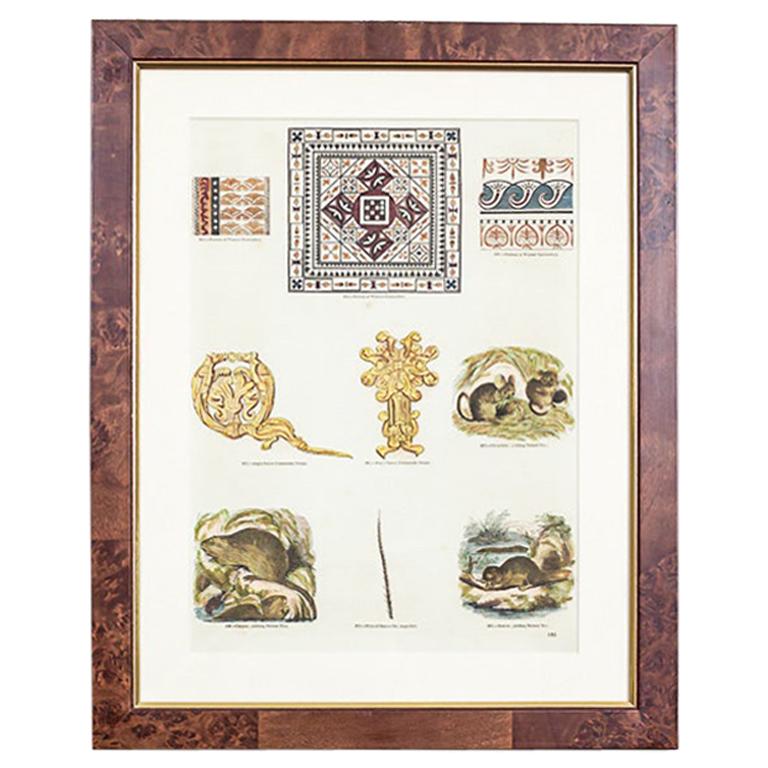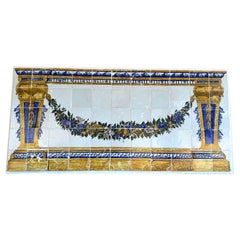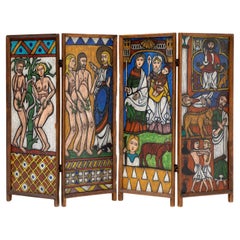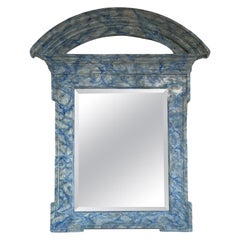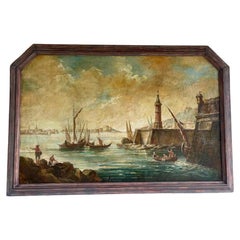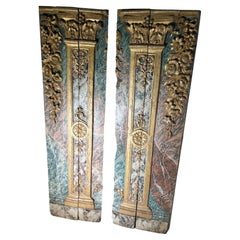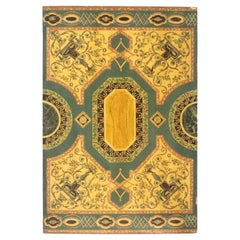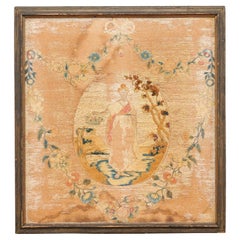Items Similar to XX Century Wall Decoration in Style of Pompeii
Video Loading
Want more images or videos?
Request additional images or videos from the seller
1 of 8
XX Century Wall Decoration in Style of Pompeii
$2,638.19
£1,962.55
€2,200
CA$3,612.59
A$4,016.71
CHF 2,097.30
MX$48,893.11
NOK 26,760.68
SEK 25,073.47
DKK 16,747.38
Shipping
Retrieving quote...The 1stDibs Promise:
Authenticity Guarantee,
Money-Back Guarantee,
24-Hour Cancellation
About the Item
The ancient city of Pompeii was founded sometime around the 7th or 6th century BCE by the Oscans, an Italic tribe that inhabited the region of Campania in what is now southern Italy. Pompeii was strategically situated near the Bay of Naples, close to fertile agricultural lands and important trade routes, which contributed to its growth and prosperity over the centuries.
The city's early history is somewhat obscure, but archaeological evidence suggests that it was initially a small settlement with modest dwellings and agricultural activities. Over time, Pompeii developed into a thriving urban center, influenced by various cultures, including the Greeks and Etruscans.
Pompeii's strategic location and economic significance led to its eventual domination by the ancient Romans. By the 4th century BCE, Pompeii had become a Roman colony, and its development accelerated under Roman rule. The city benefited from Roman infrastructure projects, such as the construction of roads, aqueducts, and public buildings, which transformed it into a bustling commercial hub and popular resort destination.
However, Pompeii's prosperity was abruptly halted on August 24, 79 CE, when the nearby Mount Vesuvius erupted catastrophically, burying the city under a thick layer of volcanic ash and pumice. The eruption resulted in the tragic loss of thousands of lives and the preservation of Pompeii's ruins beneath the ash for centuries.
Excavations of Pompeii began in the 18th century, revealing remarkably well-preserved streets, buildings, and artifacts that offer valuable insights into daily life in an ancient Roman city. Today, Pompeii is a UNESCO World Heritage Site and one of the most visited archaeological sites in the world, attracting millions of tourists each year who come to marvel at its ancient ruins and learn about its fascinating history.
Pillement panels, also known as "pillement wallpaper" or "pillement scenes," refer to a style of decorative wall covering popular in the 18th century. These panels typically depict idyllic pastoral scenes, often with landscapes, architecture, and figures in a picturesque setting. The term "pillement" comes from the French artist Jean-Baptiste Pillement, who was renowned for his charming landscape paintings and designs.
Pillement panels were originally hand-painted, but later in the 18th century, they were produced in large quantities as printed wallpapers. These wallpapers were often used to decorate the walls of grand estates, palaces, and aristocratic homes, adding a touch of elegance and sophistication to interior spaces.
The scenes depicted on pillement panels were inspired by rural life, mythology, and exotic landscapes, reflecting the taste for the picturesque and the romantic in 18th-century European art and design. Common motifs included rustic cottages, winding rivers, lush forests, and graceful figures engaged in leisurely activities such as picnicking, fishing, or strolling through the countryside.
Pillement panels were part of a broader trend in interior decoration during the 18th century, which saw a growing interest in naturalistic and romantic themes. While they fell out of fashion in the 19th century, pillement panels remain prized as historical artifacts and are occasionally replicated or reproduced today for use in period-style interiors or museum installations.
- Dimensions:Height: 49.22 in (125 cm)Width: 25.2 in (64 cm)Depth: 1.19 in (3 cm)
- Materials and Techniques:
- Place of Origin:
- Period:
- Date of Manufacture:C.1960
- Condition:Wear consistent with age and use.
- Seller Location:Lisboa, PT
- Reference Number:1stDibs: LU7365238626272
About the Seller
5.0
Vetted Professional Seller
Every seller passes strict standards for authenticity and reliability
Established in 2018
1stDibs seller since 2022
14 sales on 1stDibs
Typical response time: 5 hours
- ShippingRetrieving quote...Shipping from: Lisboa, Portugal
- Return Policy
Authenticity Guarantee
In the unlikely event there’s an issue with an item’s authenticity, contact us within 1 year for a full refund. DetailsMoney-Back Guarantee
If your item is not as described, is damaged in transit, or does not arrive, contact us within 7 days for a full refund. Details24-Hour Cancellation
You have a 24-hour grace period in which to reconsider your purchase, with no questions asked.Vetted Professional Sellers
Our world-class sellers must adhere to strict standards for service and quality, maintaining the integrity of our listings.Price-Match Guarantee
If you find that a seller listed the same item for a lower price elsewhere, we’ll match it.Trusted Global Delivery
Our best-in-class carrier network provides specialized shipping options worldwide, including custom delivery.More From This Seller
View AllXIX Century Portuguese Tile Panel
Located in Lisboa, PT
XIX Century Portuguese Altar front Tile Panel with 44 Tiles
Altar fronts were rectangular tile panels that covered the part of the altar facing the faithf...
Category
Antique Late 19th Century Portuguese Decorative Art
Materials
Clay
French Screen 4-Leaf Biblical
Located in Lisboa, PT
French 4-leaf Biblical screen with stained glass painting & red leather lined back, 1930s.
Category
Vintage 1930s French French Provincial Decorative Art
Materials
Leather, Oak
20th Century Portuguese Painted Mirror
Located in Lisboa, PT
20th Century Portuguese Mirror painted in blue and white with marbling technique.
Category
20th Century Portuguese Wall Mirrors
Materials
Oak
French 18th Century Oil on Canvas Representing a Harbor with Boats
Located in Lisboa, PT
An oil painting on canvas representing a harbor with boats, in Marseille, and attributed to the Joseph Vernet School. France 18th century.
Joseph Vernet was a prominent 18th-century...
Category
Antique 18th Century French Paintings
Materials
Canvas
Pair of Mirrors with Two-Light Appliqués, 19th Century Venice
Located in Lisboa, PT
Pair of mirrors with two-light appliqués. 19th century from Venice.
Category
Antique 19th Century Italian Wall Mirrors
Materials
Murano Glass
19th Century European Corner Cupboards in Painted Wood Depicting Musicians
Located in Lisboa, PT
A 19th-century European corner cabinet, crafted from painted wood, embodies the charm and elegance of antique furniture from this period. This particular piece features intricate cra...
Category
Antique 19th Century European Corner Cupboards
Materials
Wood
$1,259 Sale Price
30% Off
You May Also Like
Antique Painted Panels
Located in Dallas, TX
A pair of 18th century faux painted panels, appliqués with gilded wood capitals in relief. France, circa, 1780.
Category
Antique 1780s French Wall-mounted Sculptures
Materials
Wood, Paint
$2,850
Italian Roman Pompeiian Style Panels
Located in Queens, NY
10 Italian Roman Neo-classic (mid-18th Century) panels decorated in Pompeiian style faux marble inlaid patterns. (PRICED EACH)
Category
Antique 18th Century Italian Neoclassical Decorative Art
Materials
Marble
$6,000 / item
Framed 19th Century English Textile
Located in Atlanta, GA
Framed 19th Century English Textile
Category
Antique 19th Century English Decorative Art
Materials
Glass, Wood
Paintings After Louis XVI Wall Panels in Marie Antoinette Boudoir
Located in New York, NY
Exceptional antique (late 19th to early 20th century) paintings on canvas laid on wooden panels after the door panels by Pierre Rousseau installed in 1786 in Marie Antoinette's boudo...
Category
Antique Late 19th Century French Paintings
Materials
Canvas, Wood
18th Century Neo-Classical Italian Carved, Painted and Gilt Wall Panel
Located in Leesburg, VA
Anonymous
ca. 1790; Italy
Wood panel and plaster, painted, gilt and lacquered
Approximate size: 118.5 x 82.5 x 5 cm
The present panel is probably of late 18th century origin,...
Category
Antique Late 18th Century Italian Neoclassical Wall-mounted Sculptures
Materials
Wood, Giltwood
20th Century Graphic / Antique, Ornaments
Located in Opole, PL
We present you this illustration printed from a book with depictions of antique (architecture, mosaic, ornaments).
This is one of the four graphics from the series on this topic. Ea...
Category
20th Century European Prints
Materials
Paper
$103 Sale Price
20% Off
More Ways To Browse
19th Century French Wallpaper
Pompeii Wall Painting
Antique Chinese Hand Fans
Antique Farmhouse Kitchen Cabinets
Antique Glass Chicken
Antique Jade Sculpture
Antique Mercantile
Antique Oak China Cabinet
Antique Rose China Dishes
Antique Storage Tins
Antique Vanity Chest
Balinese Carved
Bamboo Globe
Bat Table
Blue Lacquered Chest
Brass Vanity Tray
Bureau 1970
Caltagirone Ceramics
